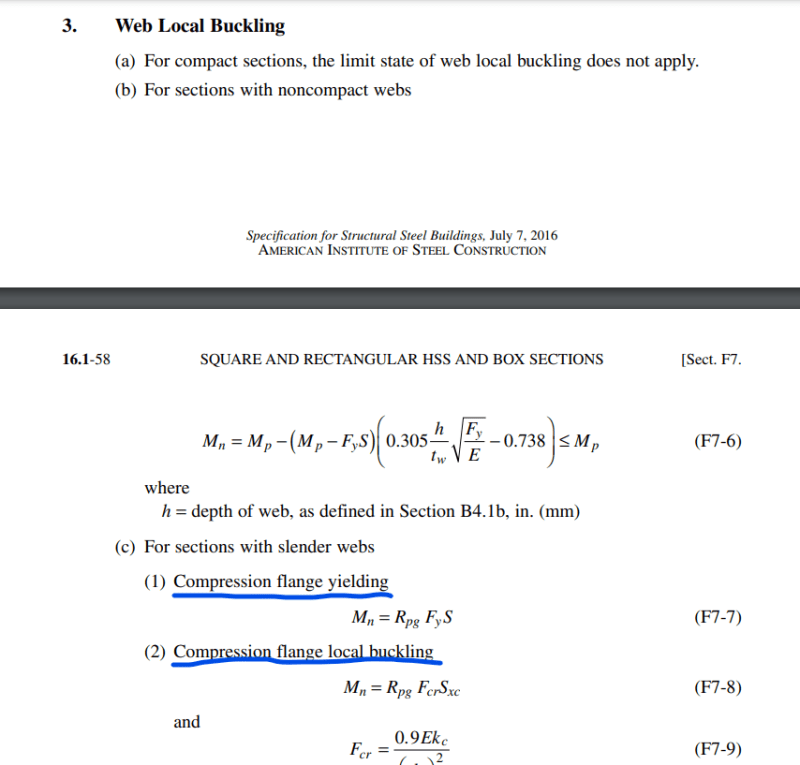We design a lot of box beams where I work, so we use F7 a lot. In the AISC 15th, they added a brand new section for slender webs that wasn't there before.
It's broken down into two sub-sections:
(1) Compression flange yielding
(2) Compression flange local buckling
I'm not seeing how either of those failure modes are relevant to web local buckling, nor the equations that are given in this section. Has anyone else looked over this new section? See below.

It's broken down into two sub-sections:
(1) Compression flange yielding
(2) Compression flange local buckling
I'm not seeing how either of those failure modes are relevant to web local buckling, nor the equations that are given in this section. Has anyone else looked over this new section? See below.

